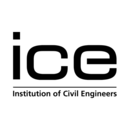Electric vehicle future
Civil engineers need a cohesive strategy to cope with the infrastructure demands likely to result from the surge in electric vehicle use within the next seven years, says Chris Evans of the Rolton Group.
Contents |
[edit] Introduction
The UK government’s commitment to ban solely petrol and diesel car sales by 2040 means the clock is ticking for transport and energy engineers to ensure the nation’s infrastructure is ready for electric vehicles (EV).
However, EV uptake could be much quicker both in the UK and worldwide, with EV batteries and internal combustion engine costs set to reach commercial parity as early as 2020.
Nissan estimates that EV prices will draw level with conventional cars by 2025 (Campbell, 2018). Society could therefore be facing a widespread uptake of EVs in the next seven years, with a potential major impact on transport and energy infrastructure.
[edit] Charging demands
The UK government is investing £400 million in EV infrastructure. Together with the many private companies entering the market, this has led to more than 12,000 EV charging points being installed and the network continues to grow.
However, there is no cohesive national strategy for EV charging, resulting in many different facilities and some locations remaining poorly served. The mainstream shift from fuel tanks to batteries will be a huge international challenge.
Transport has largely been powered by burning large volumes of petrol and diesel, which will eventually be taken as electricity from the grid – an immense change in capacity and load profile demands.
As more owners plug in EVs, the UK’s National Grid has warned people they may have to choose between boiling a kettle or charging their car (Ward, 2018). It is even predicted that EV charging will create a new peak hour, with UK demand rising by as much as 8 GW by 2030.
Although the grid theoretically has the capacity to meet the predicted demands, higher EV uptake in certain areas combined with a lack of infrastructure investment has the potential to create significant local challenges, including partial blackouts.
[edit] Significant opportunities
Despite such challenges, the rising popularity of EVs presents the UK and other nations with significant opportunities.
Regulatory changes could reduce the risk of power demands exceeding availability through smart EV charging, enabling distribution network operators to ensure charging is off-peak.
Reducing the legislative restrictions on network operators would also facilitate the investment the grid desperately needs.
Moreover, facilitating off-grid renewable power supply and storage solutions would meet EV power requirements (at least in part), secure energy supply on specific sites and go towards meeting environmental targets.
There is even the possibility of EV batteries being combined in vehicle-to-grid solutions to provide grid-balancing services, with the UK government committing £30 million to developing such ‘V2G’ technologies.
With US$90 billion global investment in EV research and development, many countries have the opportunity to progress commercial growth and academic prowess.
Priority must however be given to strengthening energy infrastructure, which is already struggling to adjust to the integration of renewable generation schemes.
Transport, energy and communications networks are becoming inextricably linked and a cohesive strategy to deliver a robust and future-proof energy infrastructure will be vital to meet society’s evolving transport needs.
This article is based on the author’s article in the latest issue of the ICE Civil Engineering journal. It was originally published here by ICE on 26 July 2018. It was written by Chris Evans.
--The Institution of Civil Engineers
[edit] Related articles on Designing Buildings Wiki
- Articles by ICE on Designing Buildings Wiki.
- Are electric bikes the future?
- Boosting electric vehicle use.
- Electric vehicles in 2021.
- Getting zero carbon done.
- Integrated transport system.
- Joining up the clean technologies.
- Platooning.
- Pop-up electric vehicle charge points.
- Smart technology.
- Sustainable transport.
- The future of transport in the UK.
Featured articles and news
One of the most impressive Victorian architects. Book review.
RTPI leader to become new CIOB Chief Executive Officer
Dr Victoria Hills MRTPI, FICE to take over after Caroline Gumble’s departure.
Social and affordable housing, a long term plan for delivery
The “Delivering a Decade of Renewal for Social and Affordable Housing” strategy sets out future path.
A change to adoptive architecture
Effects of global weather warming on architectural detailing, material choice and human interaction.
The proposed publicly owned and backed subsidiary of Homes England, to facilitate new homes.
How big is the problem and what can we do to mitigate the effects?
Overheating guidance and tools for building designers
A number of cool guides to help with the heat.
The UK's Modern Industrial Strategy: A 10 year plan
Previous consultation criticism, current key elements and general support with some persisting reservations.
Building Safety Regulator reforms
New roles, new staff and a new fast track service pave the way for a single construction regulator.
Architectural Technologist CPDs and Communications
CIAT CPD… and how you can do it!
Cooling centres and cool spaces
Managing extreme heat in cities by directing the public to places for heat stress relief and water sources.
Winter gardens: A brief history and warm variations
Extending the season with glass in different forms and terms.
Restoring Great Yarmouth's Winter Gardens
Transforming one of the least sustainable constructions imaginable.
Construction Skills Mission Board launch sector drive
Newly formed government and industry collaboration set strategy for recruiting an additional 100,000 construction workers a year.
New Architects Code comes into effect in September 2025
ARB Architects Code of Conduct and Practice available with ongoing consultation regarding guidance.
Welsh Skills Body (Medr) launches ambitious plan
The new skills body brings together funding and regulation of tertiary education and research for the devolved nation.
Paul Gandy FCIOB announced as next CIOB President
Former Tilbury Douglas CEO takes helm.
























